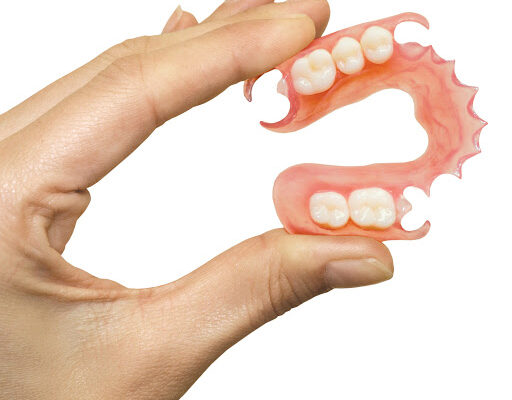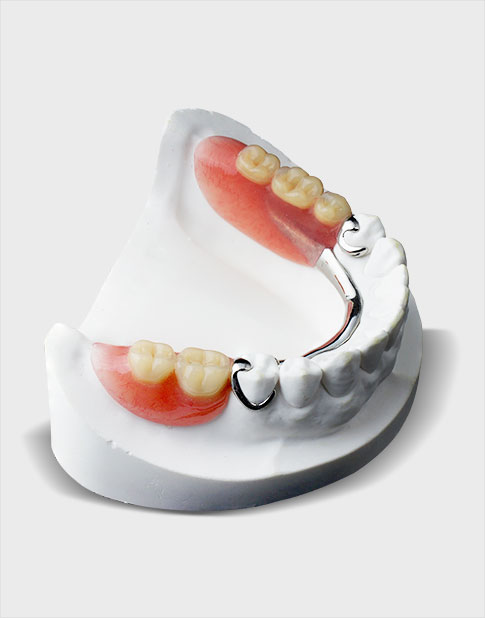Removable Partial Dentures

Removable Partial Dentures
are dentures used to replace a single tooth or a couple of teeth. This type of denture replaces missing teeth preventing the remaining natural teeth from changing position.
When you lose a tooth,teeth beside it may tilt or drift into the empty space. Opposing tooth may also shift into the empty space. This can affect your bite and place more stress and wear on your teeth and jaws. You may find it harder to clean teeth that have shifted, which can lead to tooth decay and gum disease. This is why it’s important to replace missing teeth.
This denture is composed of the artificial teeth attached to a pink or gum-colored base made of acrylic.Sometimes this base is connected to a metal framework that holds the denture in place inside the mouth.
Types/Kinds
Thermosen/Flexite
Allergy free, light weight, comfortable to wear, virtually unbreakable and no metal parts.
One Piece Casting With Lucitone
Metal framework with ordinary gums. Great for partial removable denture. metal framework attaches on teeth makes the fit adjustable.
Stay Plate (Wire Clasp)
A temporary partial denture used while the gums and supporting bone are healing after an extraction, and before getting a more durable partial denture. A Stay Plate will replace the missing tooth or teeth, and can assist with chewing and/or speaking until a more durable partial denture can be afford.
Precision Attachment Partial Denture
Dental precision attachments connect removable partial dentures to fixed bridgework under a male/female locking mechanism. Some advantages to dental precision attachments include maintainable periodontal health, less force on abutment teeth, cosmetic appearance, longevity, and stability.
Procedure
Treatment procedure requires at least three to four appointments.
Consultation
First appointment is consultation and choosing the right material for your case. Restoration rehab should be done especially for the teeth that will be used for clasp placement. Once assessment is done and teeth are in good condition, an impression (mold of teeth) will be taken.Cast will be sent to a laboratory to generate a copy of the denture base including the artificial teeth.
Trial
Once trial denture is sent by the laboratory, it will be trialed and checked if it fits okay and the shade of the artificial teeth matches the patient’s natural teeth. Bite will be checked if it has been restored properly. During trial, patient’s input will be considered and final approval of the patient is needed before the fabrication of the denture.
Install
Final stage will be try in of the processed removable partial denture. If there are any irregularities, it will be adjusted.
Recall
After 1 week of using the denture, best to have a recall so that the dentist can check if there are any mouth sores formed by the denture so that adjustments can be made.

Advantages
- Improve eating function.
- Improve patient’s speech.
- Improve patient’s face from sagging due to loss of teeth.
- Prevents movement of neighbouring teeth.
Disadvantages
- Tooth decay may occur if denture is not maintained, also tooth wear can occur when.
- Using metal clasps.
- Must be removed for cleaning.
- Visible portions or framework and clasps.
- Denture is prone to wear, fatigue of clasps, loss of denture teeth, poor fit.
- GENERAL DENTISTRY
- COSMETIC DENTISTRY
- ORTHODONTICS
- ORAL SURGERY
- PEDIATRIC DENTISTRY
- PROSTHODONTICS
- ENDODONTICS
- PERIODONTICS
- DIGITAL X-RAYS



